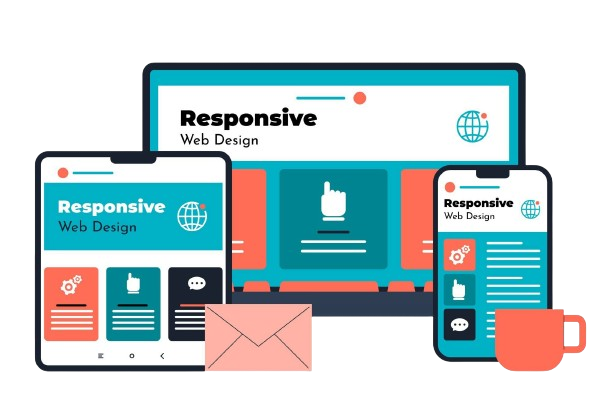Customer experience is the new business success factor in today’s highly competitive e-commerce landscape. In this competitive landscape, creating a seamless and enjoyable shopping journey for online businesses will be the best way to increase sales, customer retention, and brand loyalty. This blog will explore some of the key strategies for enhancing the customer experience on your e-commerce platform and how these improvements can have a lasting impact on your business.
Why is Customer Experience Important for E-commerce?
The digital marketplace is huge; customers have thousands of options at their fingertips. What differentiates a highly successful e-commerce business from others is that it delivers a memorable and seamless shopping experience to its customers. Customer experience encompasses every interaction a customer makes with your brand, from their first landing on your website to the moment they receive the product and post-delivery.
An investment in customer experience will lead to higher satisfaction in customers, thus promoting more repeat purchases, increased customer loyalty because customers want to stick with their brands after a positive experience, better word-of-mouth marketing through happy customers recommending businesses to others, and reducing the cart abandonment rates of your business.
Let’s get into some best practices for enhancing the customer experience
- Streamline Website Navigation and User Interface
A first impression can be the last impression. A cluttered or confusing website is enough to drive away the potential customer. In order to deliver a better customer experience, an e-commerce website should be easily navigated and user-friendly.
– Simple menu: Organize categories of products in a clean and concise manner so the customer can easily access the information.
– Search bar: Create an enhanced search bar with filters, which allows a customer to narrow down a search based on price, category, or other parameters.
– Mobile responsiveness: Most customers are now accessing websites through mobile devices, and hence, having a website mobile responsive is essential to provide an excellent customer experience.

2. Personalization and Customization
Customers love that personal touch that makes them feel valued. With the power of data and AI technology, you can now tailor your e-commerce to the specific needs of the shopper.

– Product Recommendations: Use AI-powered algorithms to display personalized product recommendations based on previous purchases or browsing history.
– Personalized Emails: You can send customized emails that include product suggestions, promotions, or reminders based on customer behavior.
– Variable content: Provide different customers with different content based on geolocation, purchase history, or interests for a more engaging **customer experience**.
3. Speed and Performance Enhancement
Website speed directly correlates to the customer experience. A slow page will frustrate the customer and increase the chance that the customer will leave your website. To have a more responsive and faster platform, do the following:
– Optimize images and media files so pages load faster.
– Use a content delivery network (CDN) in distributing your website across servers. This can enhance the speed for users accessing your site from various regions.
–Eliminate unnecessary plugins or scripts that slow down your website’s performance.

A fast website also translates to a smoother customer experience, hence higher conversion rates and more satisfied customers.
4. Smooth Checkout Process
One of the most critical elements of the **customer experience** is the checkout process. Irritating customers with the chore of checking out may cause them to leave their carts altogether. Streamlining the checkout can reduce abandoned carts by orders of magnitude.

– Offer guest checkout options : so the customer need not create an account to make a purchase and thus save precious time
– Auto-fill forms: for returning customers save them time and labor:.
– Several payment options: Offer various payment options available such as credit cards, PayPal, and digital wallets.
5. Excellent Customer Service and Support
Great customer service forms the foundation for a successful customer experience. Shoppers require support both before or after purchase.
– Live chat support: Provide live chat functionality to give customers an instant answer to their queries or concerns.
– FAQs and knowledge base: Maintain a clean and updated FAQ section to ensure that all the most frequently asked questions are answered directly, thus avoiding direct support.
– Responsive customer service: Respond promptly to e-mails or inquiries with clear, helpful answers.

Good customer service will encourage a good customer experience and trust for your brand, which means the likelihood of repeat business will increase.
6. Post-Purchase Experience and Follow-Up
The post-purchase interaction is actually the important step to hold on to the customer, thereby fostering loyalty. Order tracking: The consumer must be provided with timely information so that he is aware of where his order currently stands.
– After Sales Emails: Thank them after the sale for their business and invite them to share their feedback or experience on the website.
– Easy Returns and Exchange: Easy Return Process; simple instructions; hassle-free returns, which enhance Customer Experience.

An effective post-purchase experience can turn a one-time buyer into a long-time customer.
7. Customer Feedback and Continuous Improvement
Seeking and acting on customer feedback actively will improve the **customer experience**. It is in knowing what your customers like or dislike that you make data-driven improvements to your e-commerce platform.
– Surveys and reviews: Encourage your customers to share their opinions and experiences with your brand.
– Analytics and insights: Use website analytics to monitor customer behavior and identify potential areas for improvement.
– Iterative update: Continuously update and optimize your platform to help eliminate pain points and create a better customer experience continuously.

Listening to your customers will allow you to establish a better shopping environment as their needs evolve.
Conclusion
The best approach to succeeding in the e-commerce market that is considered to be quite competitive in the present time is the improvement of the customer experience. From ease of navigation on the website and personalization to excellent customer service, everything needs to be done with the customer at its core. In that manner, your e-commerce platform will give a smooth and enjoyable experience to the customer, thus resulting in a greater level of customer satisfaction, increased loyalty, and hence business growth.
Cup of Ecom is here to help businesses build an improved customer experience and attain e-commerce success. Let’s talk today on how we can help optimize your e-commerce platform.
